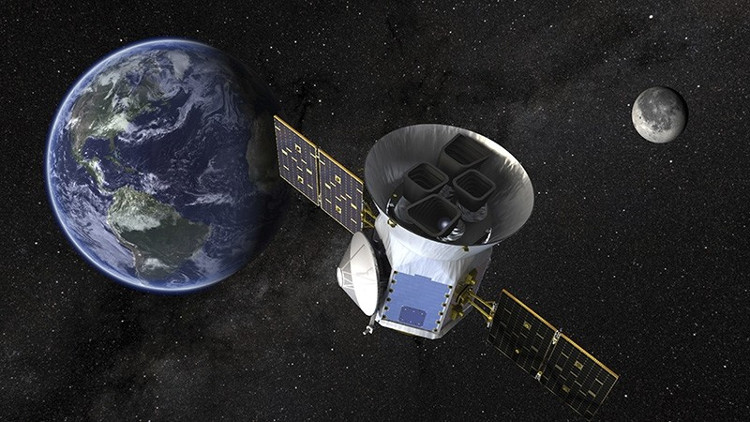NASA launches a spacecraft looking for extraterrestrial life
The search for life in the most ambitious universe of human history is expected to begin April 16 when NASA launches the newest ship to hunt the planet into space.
NASA is ready to launch a dishwasher-sized spacecraft worth $ 337 million with the aim of expanding the discovery of extrasolar planets, especially near-sized planets similar to Earth. and may contain life.
NASA's Passing Planetary Exploration Satellite (TESS) is expected to be launched April 16 at 2232 GMT on a SpaceX Falcon 9 rocket from Cape Canaveral Station, Florida.
Its main goal over the next two years is to scan more than 200,000 brightest stars for signs of planets orbiting them.

NASA Satellite Transition Satellite Exploration (TESS).(Photo: AP).
NASA predicts TESS will explore 20,000, including more than 50 Earth-sized planets and about 500 planets of at least twice the size of Earth.
"It will revolve around the nearest, brightest stars," AFP quoted scientist Elisa Quintana from NASA's Goddard Space Flight Center.
"We can even find planets orbiting stars that are visible to the naked eye," she added. "In the next few years we can see and know which star in the sky has a planet around. This is the future."
TESS was designed to continue, NASA's first mission in the hunt for planets was launched in 2009. Kepler is now aging, with little fuel and is about to stop working. For four years, Kepler followed 150000 stars in an area in the sky.
Equipped with four advanced cameras, TESS will scan an area 350 times larger, including 85% of the sky in the first two years of mission.
"On average, the stars that TESS observes are 30-100 times brighter and 10 times closer than the stars Kepler follows , " said Jenn Burt of the University of Massachusetts.
According to Jeff Volosin, who leads the TESS project from NASA's Goddard Space Center, by focusing on planets dozens to hundreds of light years from Earth, TESS will be a stepping stone for breakthroughs in discovery. space.
"Hopefully, in the coming decades, we can determine the potential of life outside the Solar System , " Volosin said.
- NASA's new spacecraft begins its mission to explore the world
- NASA announced sensational announcements about extraterrestrial life?
- NASA scientists do not believe there is life beyond Earth
- NASA admits it is difficult to find life beyond Earth
- NASA is about to announce new discoveries about extraterrestrial life
- NASA announces new discovery from spacecraft to hunt for life
- NASA officially announced the concussion discovery of extraterrestrial life
- NASA launches a spacecraft to explore the sun's mystery in 2018
- He tried to find extraterrestrial life
- Cassini spacecraft successfully flies between Saturn and its planet
- The United States launched an army of life-seeking ants out of the globe
- NASA seeks life in Pluto
 Van Allen's belt and evidence that the Apollo 11 mission to the Moon was myth
Van Allen's belt and evidence that the Apollo 11 mission to the Moon was myth The levels of civilization in the universe (Kardashev scale)
The levels of civilization in the universe (Kardashev scale) Today Mars, the sun and the Earth are aligned
Today Mars, the sun and the Earth are aligned The Amazon owner announced a secret plan to build a space base for thousands of people
The Amazon owner announced a secret plan to build a space base for thousands of people